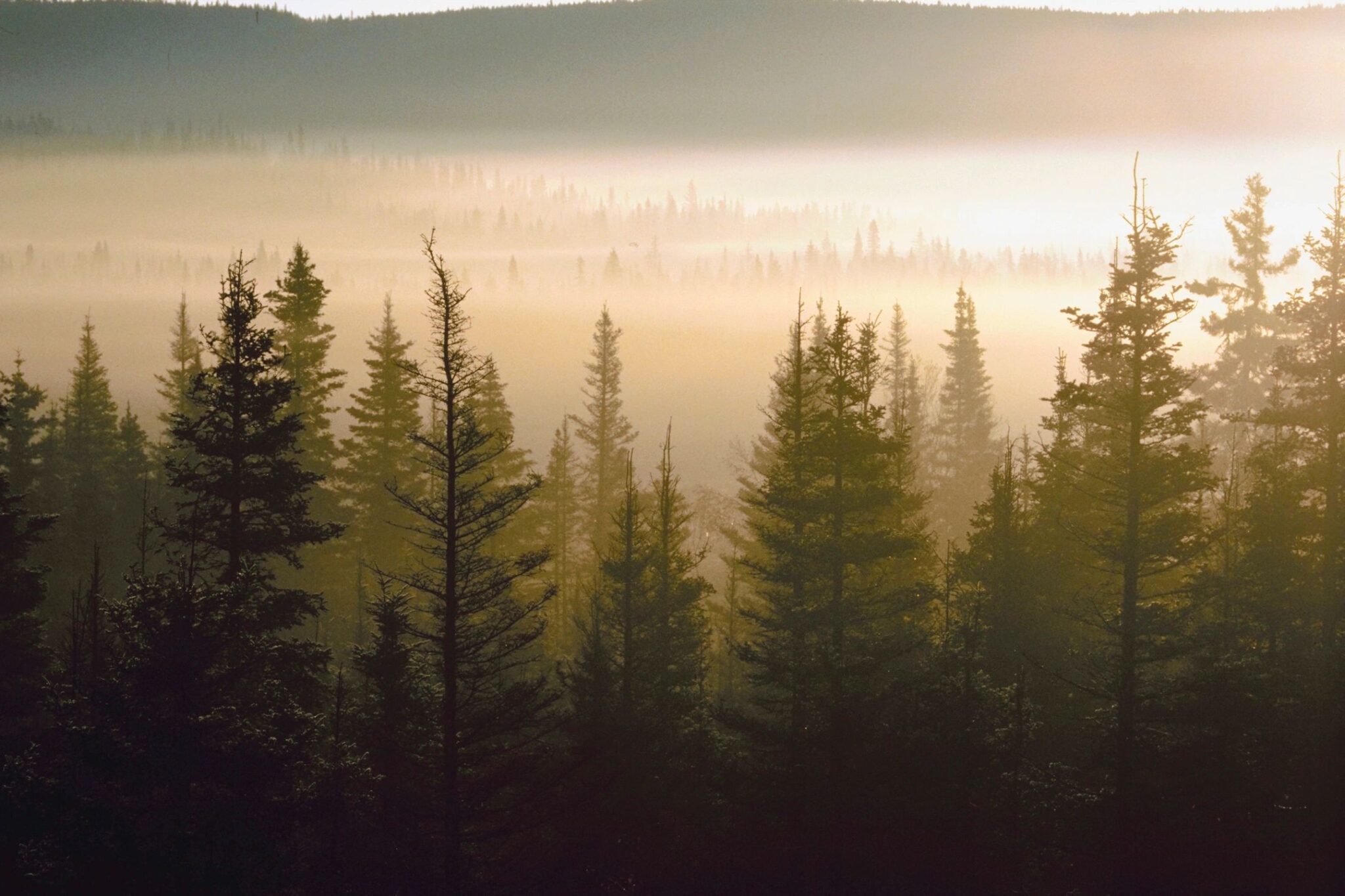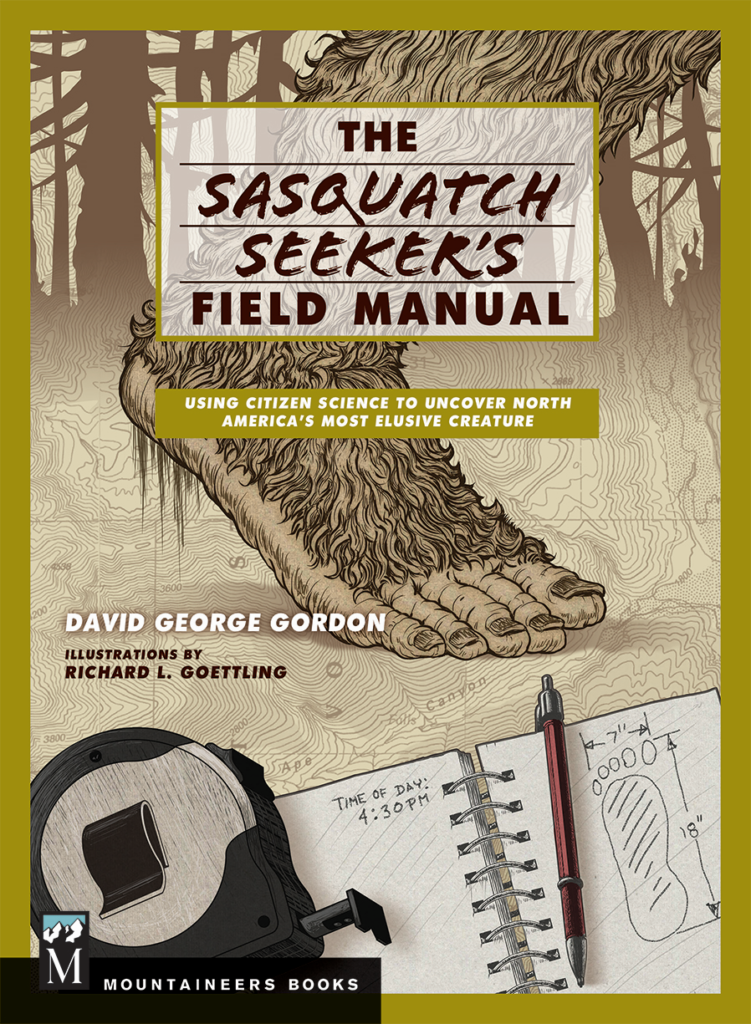Seeking the Sasquatch
Book Review: When the Sasquatch Legend Teaches Us About Critical Thinking
By Patricia Balbon (@watscicomm)
Gordon, David George. The Sasquatch Seeker’s Field Manual: Using Citizen Science to Uncover North America’s Most Elusive Creature. Mountaineers Books, 2015. 176 pages. Paperback US$12.26.
It’s late, and you’re seeking shelter for the night after a long hike. Something’s lurking among the shadows; pungent wafts of musk barrage your nostrils. In the soft mud, you glimpse a fresh footprint with claw contours. The fronds of a nearby fern are in shreds—could it be a bear? Leaves rustle behind you. Snap!
Fear not: you can experience these thrills at home by leafing through David George Gordon’s The Sasquatch Seeker’s Field Manual: Using Citizen Science to Uncover North America’s Most Elusive Creature. Whatever name you call it — Bigfoot or Sasquatch — North America’s unseen but ostensibly ever-lurking monster never fails to fascinate.
Healthy skepticism
Gordon’s book is a charming detour from typical science writing, and he applies scientific thinking to extraordinary circumstances with healthy skepticism. The award-winning author compiles a dossier of Bigfoot encounters, calling upon a wide range of materials that may indicate real sasquatches (including 1920s media reports, Native American oral history, and collections of recent supposed sightings). He covers sasquatch lore with a thoroughness that is both surprising in volume and admirable in intent. Yet, alongside its encyclopedic scope, The Sasquatch Seeker’s Field Manual diligently reminds readers that the body of evidence is unreliable: Bigfoot most likely does not exist.
The citizen scientist is no stranger to grappling with big questions about the nature of our world. It is easy to understand why we continue to seek–generation after generation–upright-walking, primate-like creatures. However, though it would be exciting to discover a new hominid, critical thinking helps us distinguish fact from fiction. In the Sasquatch Seeker’s Field Manual, Gordon warns about how sasquatch lore is littered with exposed hoaxes. He quotes Marcello Truzzi: “An extraordinary claim requires extraordinary proof.”
Seeking the Sasquatch with citizen science
Gordon recounts the time before science became a profession, when all scientists were essentially part-time citizen scientists. He suggests that citizen science is the ideal avenue for acquiring definitive evidence on the existence of the sasquatch. Free from the constraints of scientific research sponsored by institutions, citizen scientists can explore without the pressure of producing timely results. Because allocating funds and labour to search for Bigfoot is a justifiably poor investment for professional scientists, Gordon reflects that citizen scientists, who likely already do other citizen science projects while on hikes and in their leisure time, are well-positioned to seek serendipitous Sasquatch evidence.
The argument for Sasquatch citizen science encompasses Part I: Elements of a Successful Sasquatch Search, serving as a foundation for the latter two sections of the text. Part II: Protocols offers best practices for logging data. With his focus on data integrity and rigorous collection, Gordon offers lessons appropriate for any citizen scientist (whether or not they’re hunting for Bigfoot). Part III: Hiking Guide organizes profiles of prime hiking trails renowned for sasquatch sightings. If you want spooky close-encounter anecdotes, read this section!
Happy hunting
Plenty of citizen science projects are based in sasquatch haunts of British Columbia, Washington, Oregon, and California, including but not limited to the Pacific Northwest Bumblebee Atlas, Fern Watch, and Redwood Watch. After reading The Sasquatch Seeker’s Field Manual, you can go outside with a more discerning eye, deftly identifying what you see and still looking beyond. Many citizen scientists, while grounded in a desire for good science and data collection, maintain a sense of wonder. Perhaps there is something lying in wait between the shadows.
This book review is part of an ongoing series of book reviews written by members of Dr. Ashley Rose Mehlenbacher’s research team in partnership with SciStarter. If you have a recommendation for a book to review, please contact SciStarter Editor Caroline Nickerson at [email protected]. This work has been partially supported by the Ontario Ministry of Research, Innovation and Science’s Early Research Award program; and the Social Science and Humanities Research Council of Canada Insight Grant program. Views expressed are the opinions of the author and not funding agencies. Want to catch other book reviews from Dr. Mehlenbacher’s team? Head over to the Citizen Science Connected blog.


Patricia Balbon is a B.Sc. student taking the Society, Technology, and Values Option at the University of Waterloo, in Canada. Her research interests involve studying open science, collaboration networks, and community values.





